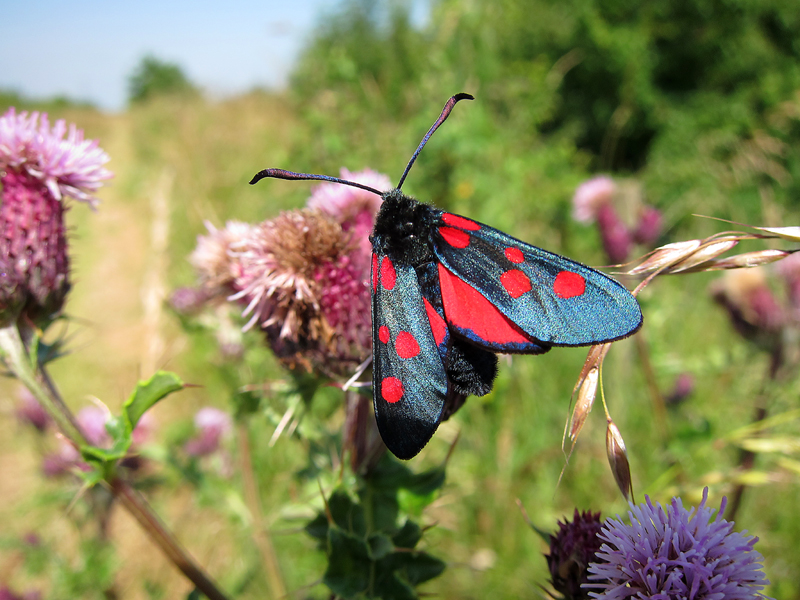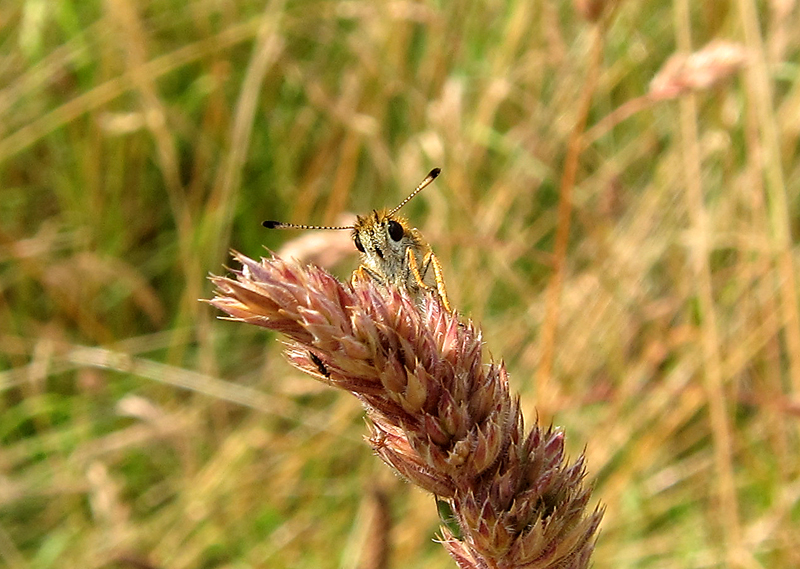The purpose of these walks is to help people to be more confident in identifying these insects on the site. Some people ignore the ‘brown’ and ‘white’ butterflies because they are not sure they can tell them apart. By the end of the walks most people are having a go as they learn the points to look out for. It is the same with the dragonflies and people were confidently separating Red-eyed from Small Red-eyed Damselflies once the differences were pointed out and both were seen together.
On the butterfly walks the sun was hot and there was a lot of butterfly and day-flying-moth activity. The ‘browns’ showed a considerable gain on last year with Ringlets being abundant as 75 were recorded, with 32 Meadow Browns.
Several moths identified rather carelessly as Six-spot Burnets were re-identified as Narrow-bordered Five Spot Burnets when somebody noticed a spot was missing. The Six-spot Burnets fly later, after the Five-spots have finished.

- Narrow-bordered Five-spot Burnet
More careful observation of the Small Skippers was rewarded by the discovery of a thriving colony of Essex Skippers. The two populations keeping to their own areas on the site, Essex on the Deep Pit bank, opposite the railway line and along the Causeway and Small Skippers around the dry end of the Slurry Lagoon.

- Essex Skipper
The second generation of Common Blues were only just beginning to fly, so the counts were low, but there are signs of a come back from the dismal numbers seen last year but, unfortunately, there was no sign of a recovery with Small Heath and Brown Argus, as none of these two species were seen.
The dragonfly walks were slightly less successful than the butterfly walks as several species were no longer flying and others had yet to get going. The Small Gravel Pit made the best showing with Red-eyed, Small Red-eyed, Emerald and Azure Damselflies being seen, along with Brown Hawker and Black-tailed Skimmer on the first walk. On the second walk the sky was overcast for much of the time and the wind was strong, so much smaller numbers of insects were seen but a Ruddy Darter was found by the Small Gravel Pit.